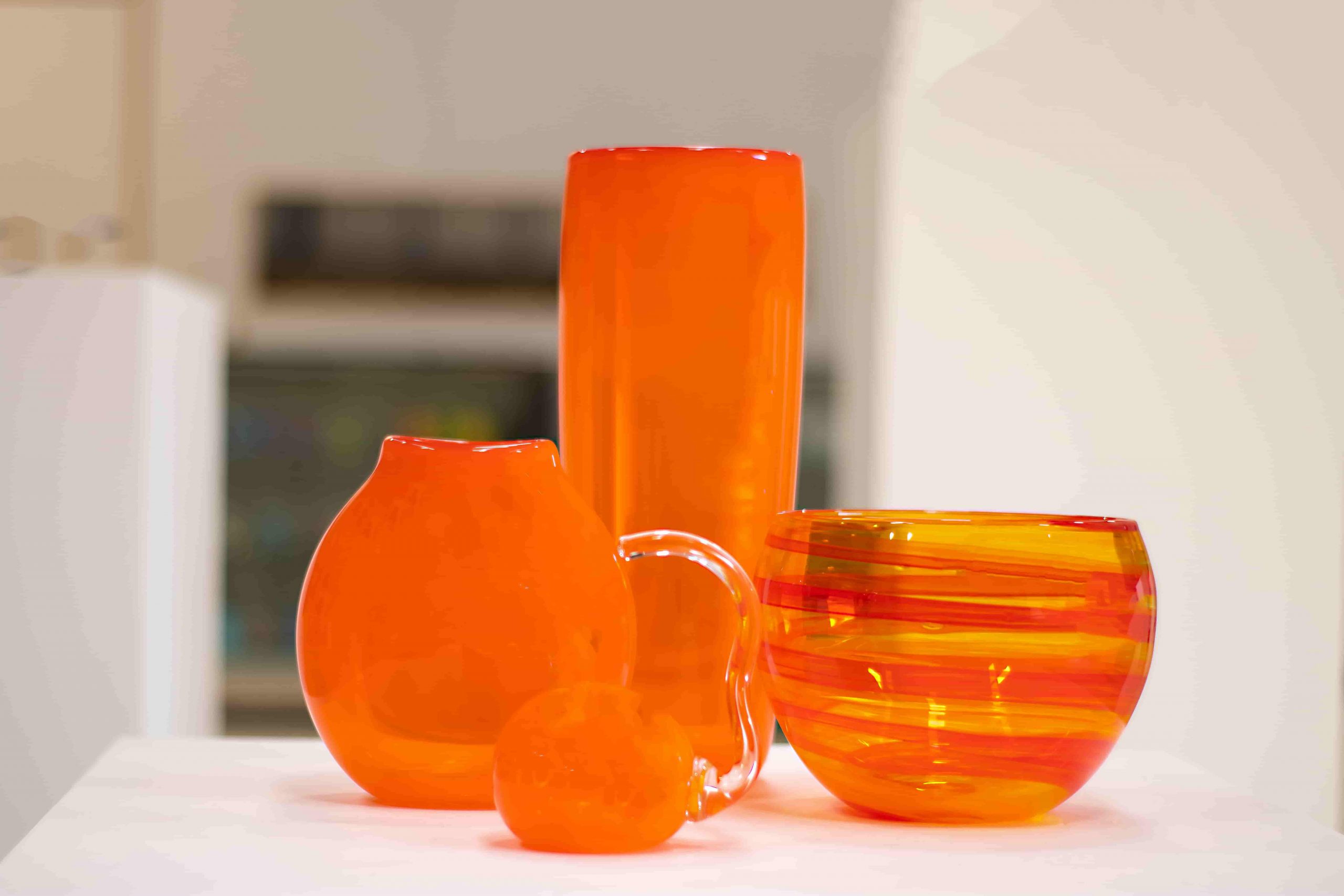
Glass casting is the process of designing unique glass sculptures with the help of mold and kiln. It is a difficult, time-intensive process that requires some specialist tools. In this blog, we’ll guide you through the process of casting and how to get started. We’ll explain:
- What Is Glass Casting?
- Common Glass Casting Techniques
- Glass Casting Equipment
- How to Cast Glass
What is Glass Casting?
Glass casting is a technique of shaping glass objects. The process starts with melting glass—glass frit, glass powder, glass stingers/noodles, so on—to the point where it becomes soft and malleable.
Pour this liquid glass into a predefined shape by using a mold. This mold could be made of sand, graphite, metal, or any other object.
Fill the mold and wait for it to cool down where it solidifies. Remove the solidified glass structure from the mold. Use grinding/polishing tools to get the final glass sculpture.
Common Glass Casting Techniques
There are multiple glass casting techniques to create a unique glass work of art:
Graphite Casting
Available in a variety of shapes and designs, graphite mold can withstand high temperatures and help you achieve a higher degree of dimensional accuracy and tolerances.
Pate De Verre
It is a French team that refers to using a glass plate to design desired glass shape. The process involves the mixing of colorants, enamels, gum arabic, and water and combined with minuscule glass pieces.
Kiln Casting
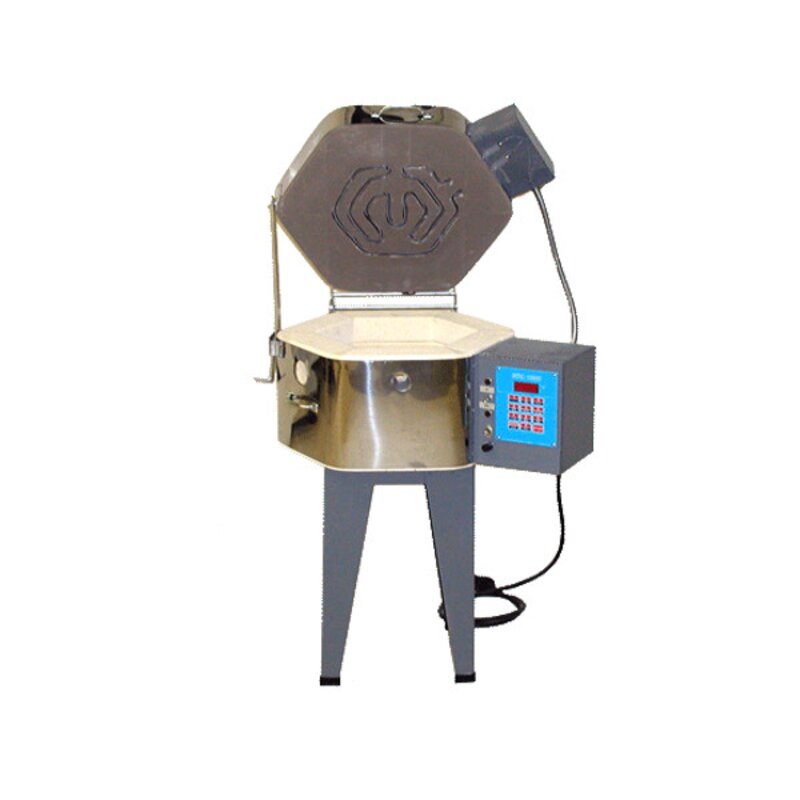
Kiln casting is the process of placing cold glass pieces into, through, or over the kiln casting mold inside a kiln. Heat it to a temperature where the glass becomes liquid and takes the required shape.
Sand Casting
Sand casting art is one of the most common and economical processes to cast glass. It involved placing or craving a design into the sand to create a mold. Then, pour hot liquid glass into the molds and wait for it to cool down.
Lost Wax Casting
This technique requires a mold that is surrounded by a sacrificial wax model. During the process, the wax is melted out and replaced by molten glass. This type of casting is the best for creating detailed glass structures.
Important Note: There are a number of molds available in the marling to choose from. Also, you can make your own glass mold from silica, plaster, or any other material.
Equipment Needed for Glass Casting
Safety Equipment
Safety equipment is highly important to protect yourself during the glass casting process. Below-mentioned is the required safety equipment:
- Heavy-duty apron
- Face shield
- Heat-resistant gloves
- Respirator
- Sleeves protective
- Infrared safety glasses
and more.
High-Quality Casting Wax
Wax is required to create your design before designing a mold around it. Heat gun, soldering iron, and texturing tools are also required to shape the wax according to your needs.
Important Note: You can use dental tools to effectively carve and sculpt designs.
Casting Molds
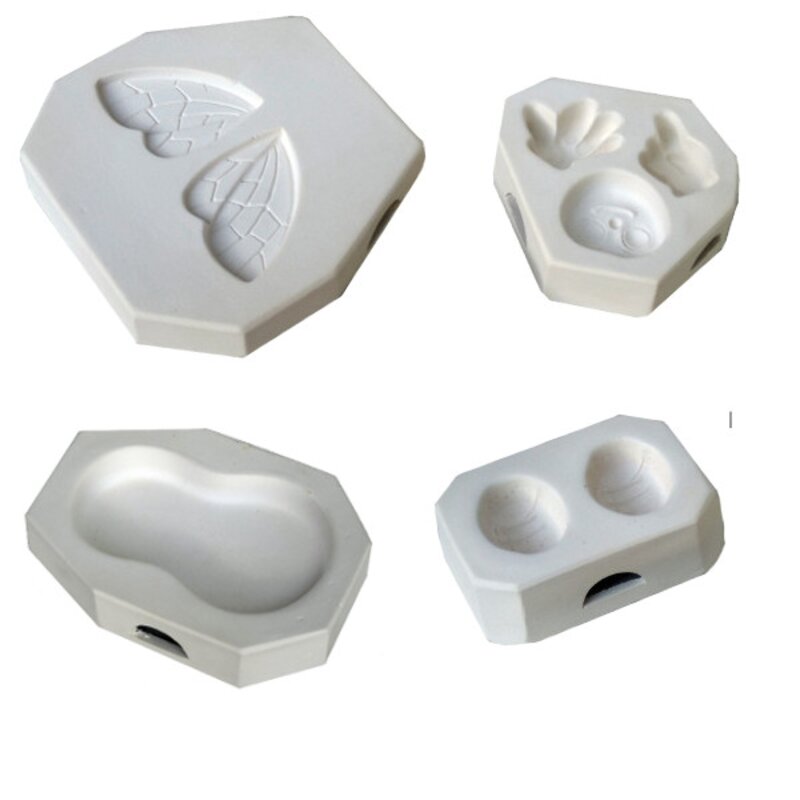
You can buy the required casting mold or create your own using a combination of silica and plaster. Mix equal parts of silica and plaster by slowly adding water until it gets a consistency similar to heavy cream.
Kiln
Choose a high-quality kiln large enough to carry your casing mold. If you are making a kiln for glass casting, make sure your kiln can withstand high temperatures.
Wallpaper Steamer
A wallpaper steamer is required to melt the wax out of your casting mold.
Weighing Scale
A weighing scale is essential to calculate how much glass you will need according to your glass casting project.
Cold Working Tools
It is also essential to grab some cold working tools—belt sander and grinder—to polish and finish your piece in the final stage of the glass casting process.
9 Easy Steps of Casting Glass
1. Design your Glass Piece
The first step of casting glass involves drawing your idea and then shaping it using material such as wax or clay. Always keep size limitations in your mind because a glass sculpture with 1 inch of thickness approximately takes a day in the kiln. The firing time for thicker pieces can stretch up to weeks.
For 3D glass models, using wax—beeswax, paraffin, and microcrystalline—is one of the best options. Make sure to attach a wax reservoir to your glass model for making it easy for the glass to flow through.
2. Make a Plaster Mold
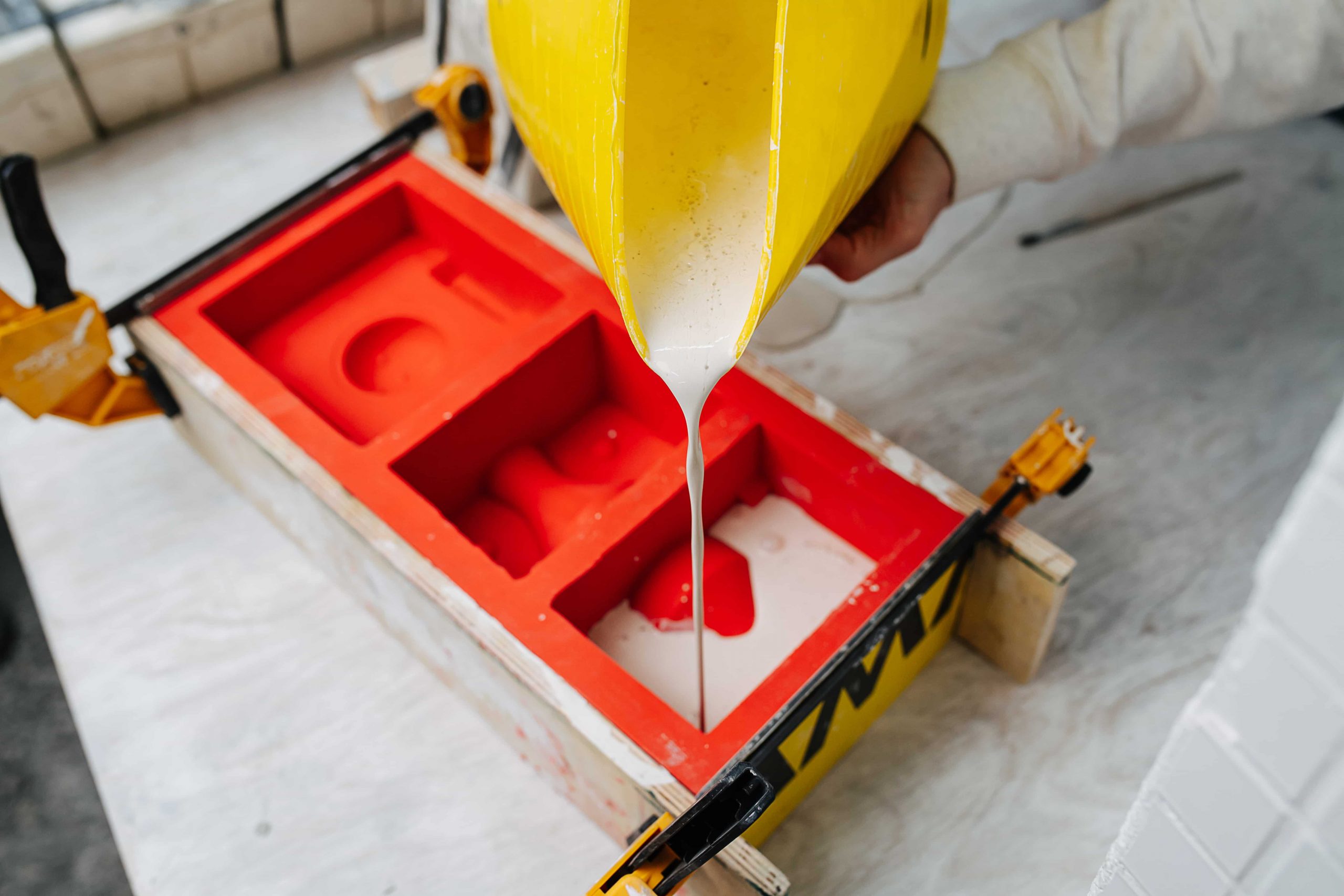
In order to make a mold for casting, add silica, plaster, and water in equal proportion. Silica has a high refractory and plaster gives the support. Mix the mixture together until it gains consistency similar to heavy cream.
Build a temporary cover around the wax model to secure the mold. Pour the mixture around the mold and let it sit for 30 minutes. Make sure you knock repeatedly on the work table to eliminate air bubbles trapped in the mixture.
3. Remove the Mold
After the mixture is completely dry and solidified, it’s time to remove the temporary cover and carefully flip the mold. If you have used clay, remove it slowly without breaking the plaster walls. On the other hand, if you have used wax, it’s time to melt down the wax.
Now clean the mold to remove any loose particles. Let it dry for a few days to get rid of any moisture.
4. Melt Out the Wax
Microwave is the most effective tool to melt out wax from the mold. Place the mold in the microwave and place a container beneath the mold to collect the wax. Always heat the mold in short bursts until all the wax has collected into the container.
Once all the wax is melted out, wash it with boiling water to get rid of any residual wax.
5. Measure Out the Glass
Water displacement is one of the best ways to calculate the amount of glass needed for the mold. Just follow these below-mentioned steps:
- Pour water into the mold and fill it till the brim
- Empty the mold in a container
- Weight the water collected from the mold
- Multiply the weight with 2.5 (the density of glass) to measure the amount of glass you’ll need
Make sure you select the right type of glass, as the quality of glass will affect the final result.
6. Pore the Glass into the Mold
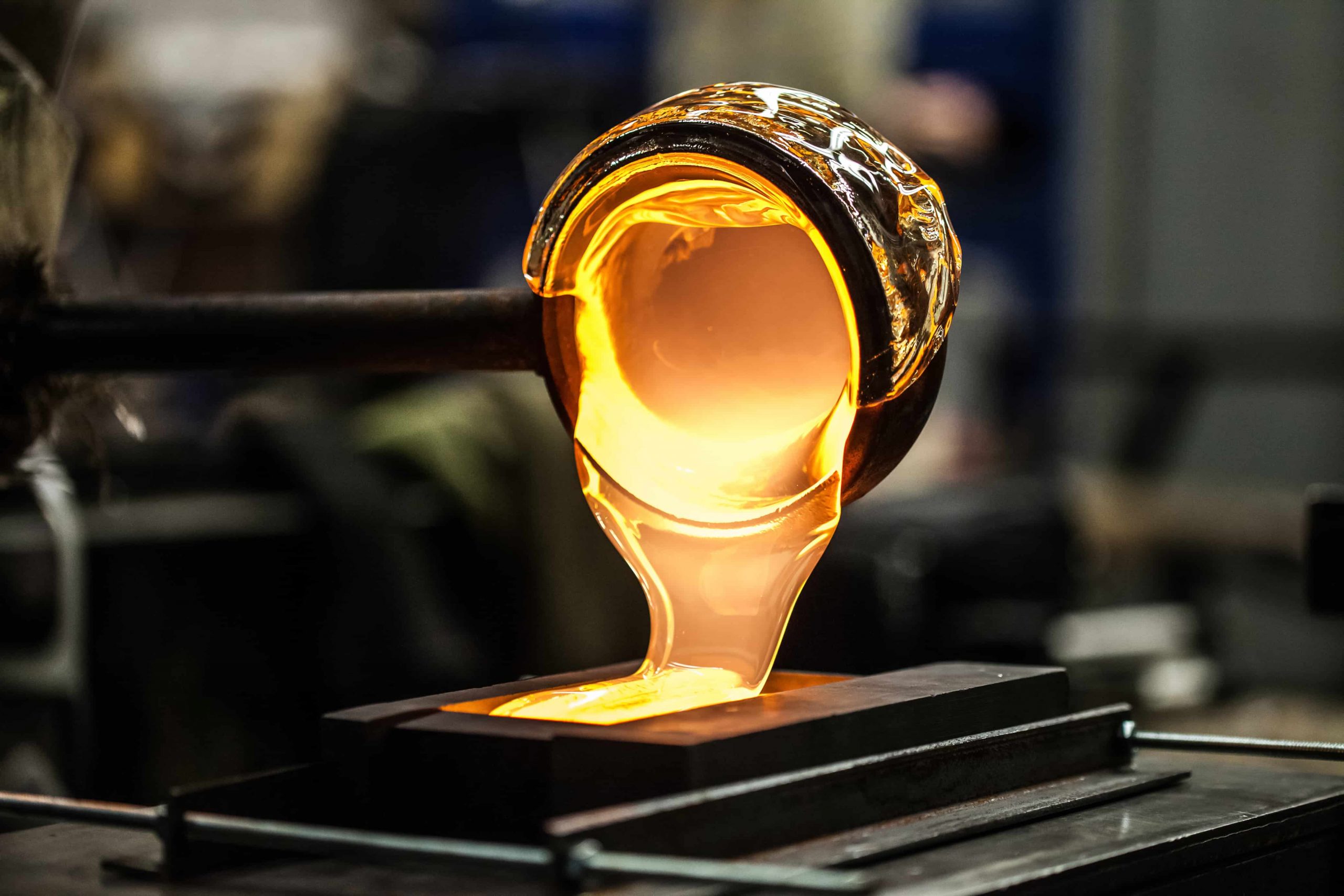
It’s time to melt the glass and pour it into the mold. Before you melt your glass, make sure it is thoroughly cleaned with vinegar diluted with distilled water. Also, use gloves to avoid smudges and fingerprints.
Place the glass in the kiln over the kiln shelf paper and fire the kiln until it reaches the required temperature where your glass becomes liquid. Now carefully remove the glass and pour it into the mold.
7. Allow it to Cool Down
There is no one-size-fits-all temperature when it comes to firing glass, it all depends on the quality and thickness of the glass piece.
Once your glass is poured into the mold, you must bring the temperature down as slowly as possible to prevent it from cracking.
8. Remove the Final Product
Once the firing schedule is completed, it’s time to remove the final glass sculpture from the mold. Use heat-resistant gloves and break the mold with the help of a rubber hammer.
Chances are some of the plaster may stick to the glass. Using vinegar followed by gentle brushing helps you clean off any excess plaster.
9. Polish the Final Product
The last step of glass casting is to grind and polish the final product with cold working tools. Break off any sprues, grind the edges and bottom on the belt sander/lap wheel and pish the surface.
Now, it’s time to admire your stunning piece of work.
Conclusion
Casting glass into a desirable form required patience and practice. Moreover, you need to be cautious while working with such high temperatures and molten glass.
Now that you have learned the glass casting process. It’s time to design your own masterpiece with the help of the right casting supplies. However, the final results may vary depending on various factors such as the size of glass, temperature, and more.
